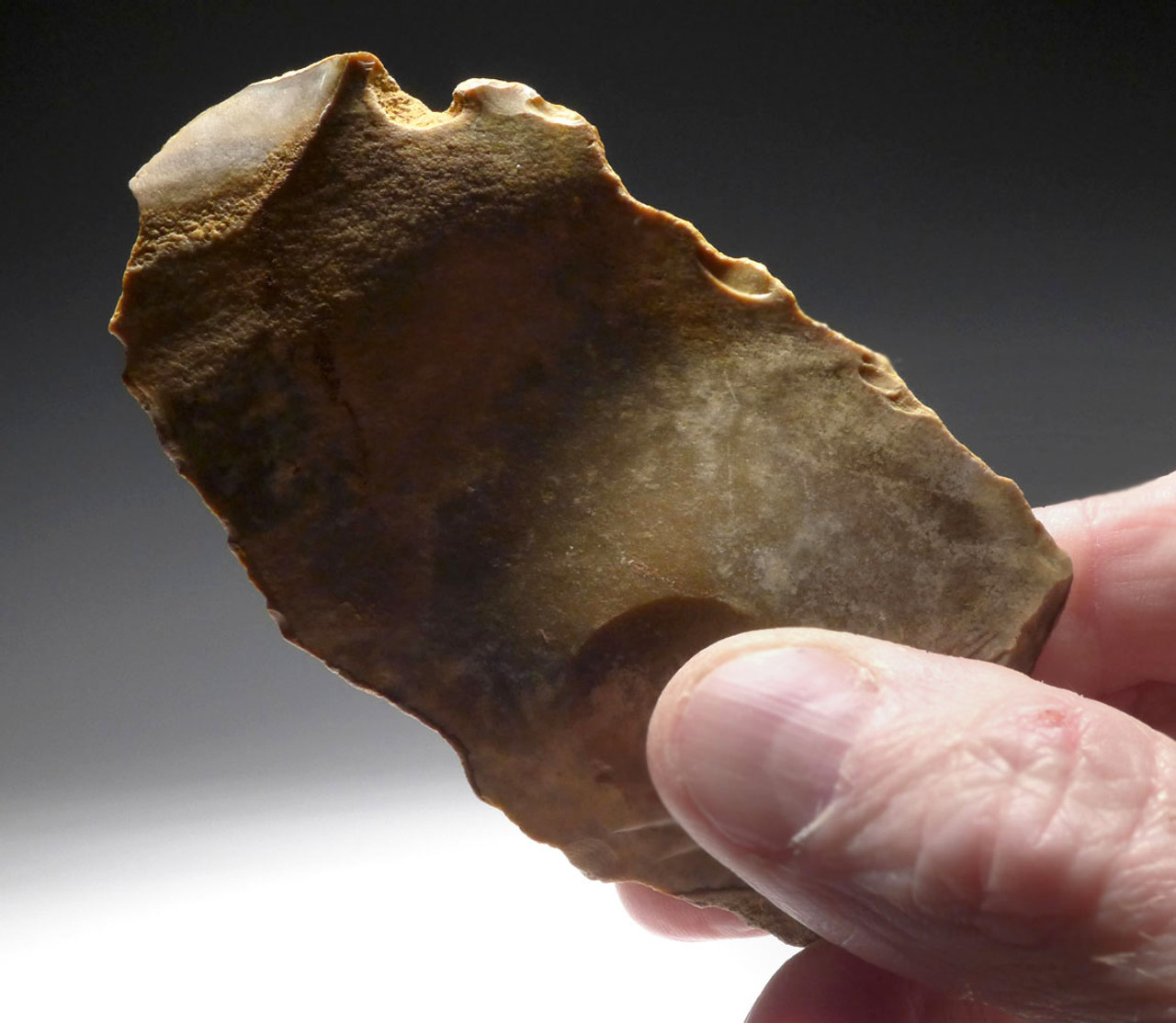Product Description
SEE MORE MOUSTERIAN NEANDERTHAL TOOLS
This authentic stone tool was fashioned by Neanderthals during the Middle Paleolithic period, over 40,000 years ago. It is made of flint and was collected from a former Neanderthal occupation cave site in Caen, France. The site this specimen was found has long been closed to collecting and is protected by the government, making this Paleolithic artifact exceedingly rare and desirable! Because collecting these artifacts has been off-limits for decades, genuine fine grade Mousterian Neanderthal tools such as this specimen, must come from old, private collections. The ever-increasing buyer market in pursuit of a very limited quantity of fine grade Old World Paleolithic artifacts continues to push values and prices up, as time goes on.
This is a Neanderthal flint flake tool classified as a SIDE SCRAPER. It is extremely large, more than double the typical size of other flake scraper tools of this period and region. It was made on a huge, steep-backed flake offering extreme robustness. Considerable original flint nodule cortex was left on the surface, most likely to create a rough surface to aid in gripping the flake tool when wet with animal blood and fat. A flake tool of this size and thickness would have been perfect for defleshing and scraping large hunted animal hides such as mammoth, rhinoceros, bison, and bear. It is complete with all its original flaking. The cutting edge of this scraper is intact with use wear and evidence of original prehistoric re-sharpening. Intact mineral deposits and deep patina on the flint surfaces and hinge fractures to testify to its authenticity and lack of any modern alterations. A superb example from this famous Neanderthal region!
There is an interesting story about this small collection of Neanderthal flake tools we acquired from Caen, France. The original collector who found them was very inexperienced in recognizing Paleolithic flake tools. His lack of being able to discern regular stone from actual human-made tools resulted in him mostly picking up hand axes since they are more obviously flaked than flake tools. Of the flake tools he picked up, these had to be so amazing for him to know they were actual Paleolithic tools rather than debris flakes. Because of his ignorance, the flake tool collection was very small and only included the finest Mousterian Neanderthal flake tools, most being the absolute best we have ever seen from this region!
 US DOLLAR
US DOLLAR
 EURO
EURO
 AUSTRALIAN DOLLAR
AUSTRALIAN DOLLAR
 CANADIAN DOLLAR
CANADIAN DOLLAR
 POUND STERLING
POUND STERLING




















